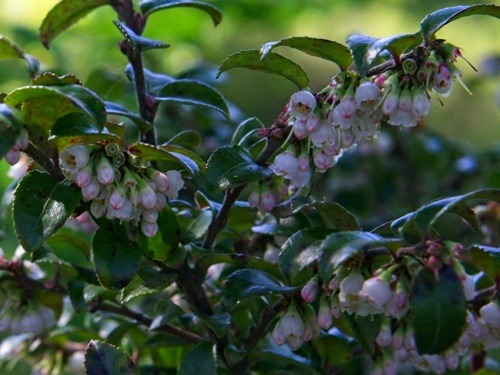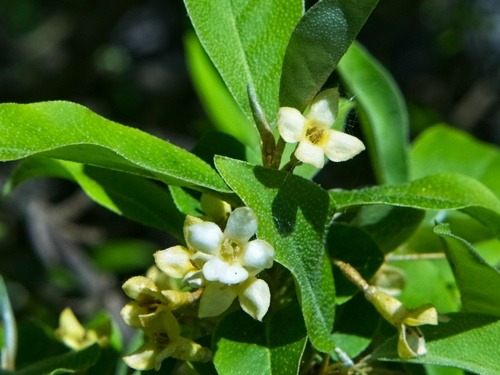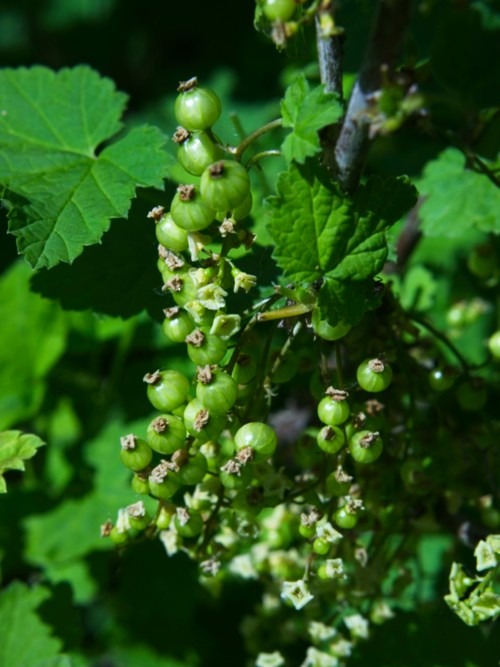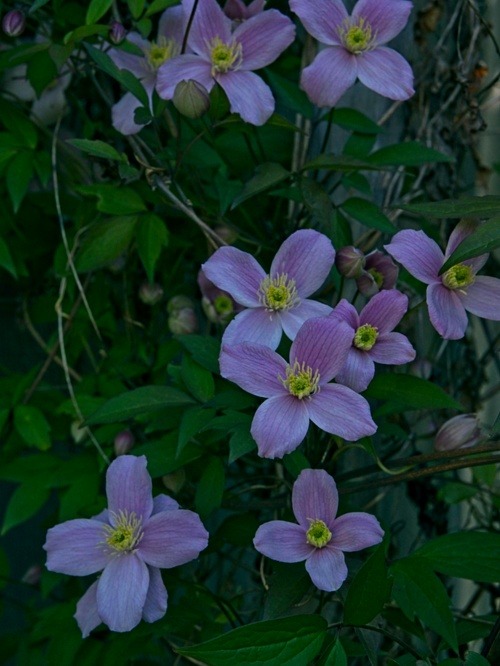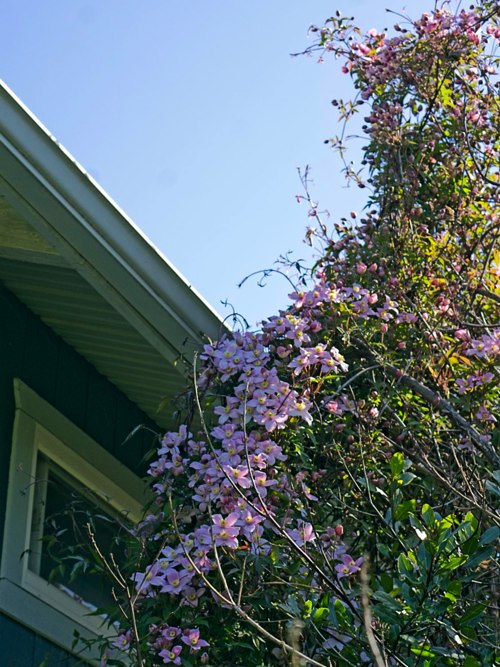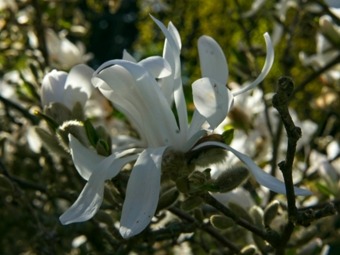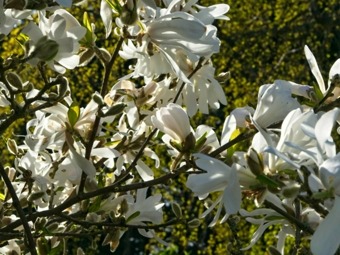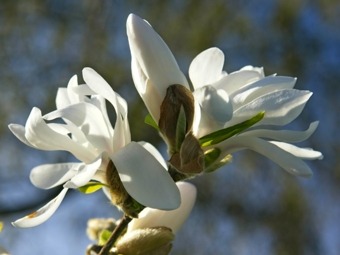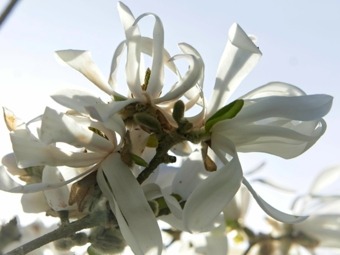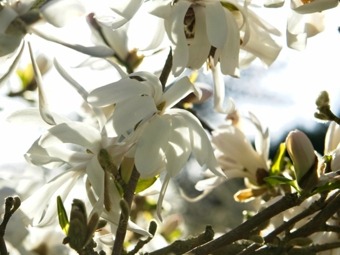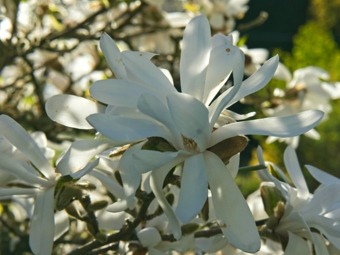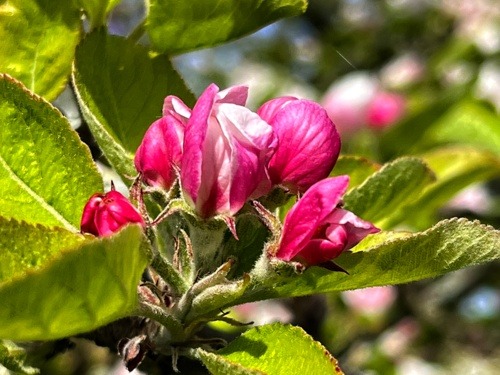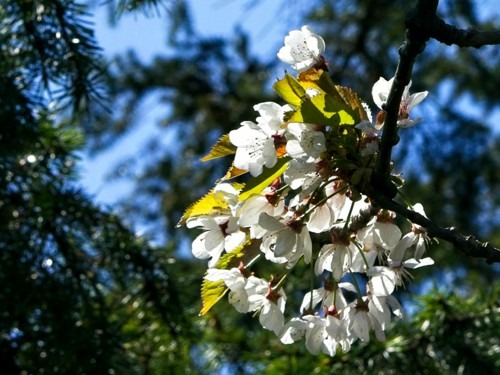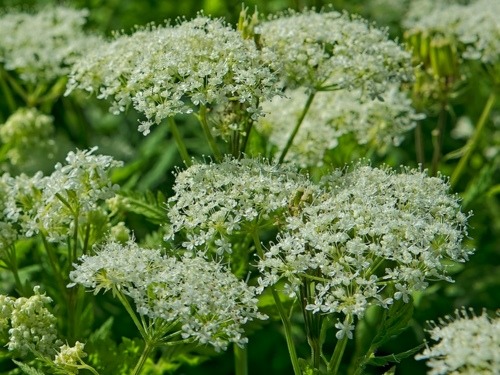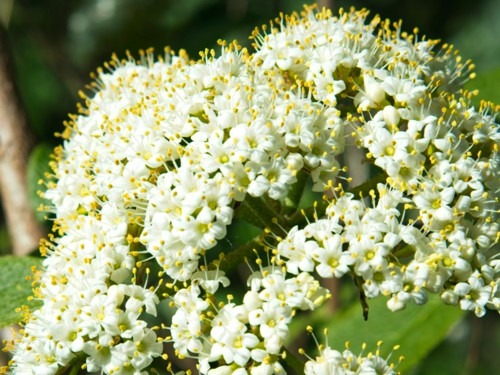April was simply delightful – from a gorgeous full-moon display to the outburst of magnolia and fruit tree blossoms. Bird activity dramatically changed from hanging out at the feeders to building nests in hidden places; we started seeing the return of migrating birds. Irrigation water was turned on; we built a new fence out of willows to protect the raspberries; and we started mowing a path to the back field. April was also a bit disconcerting, with invasions of ants, the renewed war on bindweed, winds of 42 mph, and uh oh…peacocks.
Sidenote: This blogpost is an ongoing monthly journal of observations and happenings at Barbolian Fields. Thanks for reading!
Here are the details:
Natural Events
The Pink full moon in April is named for the pink moss phlox flowers (Phlox subulata) native to the eastern U.S.. The Pink moon symbolizes renewal, growth, and the changing of seasons. It was a cold and clear night for viewing. Spring is here but it does not feel warm yet. The next full moon, known as the Flower moon, occurs on May 12.
High winds clocked in at 42 mph, strong enough to tear the cherry blossoms from their branches and send them flying. Blossom flurries! Like it was snowing! Another reminder that it is still early spring.

April showers only amounted to 0.28”, most of which was drizzle lost to the wind, and far below our 30-year average of 1.32”. The water year, which begins in October, started out wet, but we had only 0.44” of rain in January, compared with the average 2.45”. We average a total of 18.41” precipitation / year, although some years we’ve had as little as 13”. Compare that with Forks, only 75 miles west, which averages over 100”!
Hard to make predictions at this point, but perhaps radical swings will be the norm? Either way, I’m going to make sure our driplines are working and do my part to Mulch the World (someday I’m going to put that on a T-shirt).
We record our weather observations on the national database of the Community Collaborative Rain, Hail, & Snow Network – or CoCoRaHS – “Because every drop counts.” It’s a great program! Are you familiar with it?
Last frost on our homesite, which is close to sea level, USDA Zone 8b: April 15.
Also seen in April: blue sky and temperatures above 60°! A streak of relatively warm and calm weather allowed pollinators to access blossoms without being blown off their branches. We might get a good fruit harvest this year!
Bee on Rosemary to the right.

Projects on the Homefront
Irrigation Ditch water is turned on. Yay! It will be turned off in mid-September to leave water in the river for the salmon to return. It takes planning, because July-September are our dryest months. We are making sure all the water lines are up and running.
Greenhouse revisions: Am currently moving out wintered-over plants to make room for new starts. Unfortunately, it has been a bit of a disaster this year because of the ant invasion. More on that later, but suffice to say that in my rush, I did not acclimate the plants properly and I did not start many new seeds.
New fence! We built a fence of woven willow to try to keep the deer out of the raspberries. Last year, they munched the plants down to knee level. We managed to get a handful of berries in October rather than abundance in June. It occurs to me that the new fence is a convenient perch for a whole lot of birds who might appreciate easy access to the berries, especially if the deer haven’t eaten them all first. This project has been a lesson in “use what you have” that made it obvious to me how I tend to make things way too complicated! A post will follow, maybe titled “Fencing Follies.” Ha!
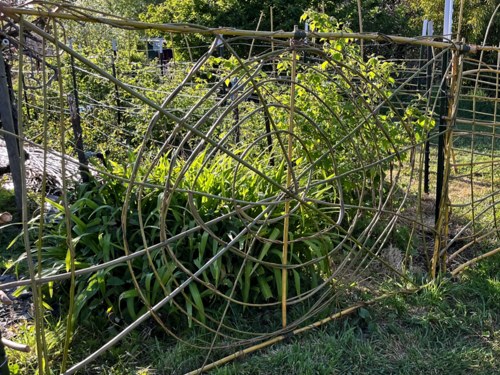
Animals
Birdwatching:
It’s not always what we see, but often what we don’t. As in – where are my Steller’s Jay friends? All through the winter, you called to me from the treetops and waited on nearby limbs for me to scatter peanuts … and now? Nowhere in sight. I suppose you have more important things on your mind than mere peanuts.
Other birds, too, seem to have shifted their diets to bugs and are off busy making nests. Crows, though, opportunists that they are, have flown in to snatch a peanut now and then. They don’t weigh each one to see which is the heaviest the way the Jays do.
Also seen:
- Two house finches wearing their brighter red plumage, feeding each other at the birdfeeder. They will be setting up house together, for sure.
- A chickadee darting in and out of a crack about 15 feet up the trunk of a dying big-leaf maple tree. Aha! So That is where you are nesting! Perfect spot!
- Two eagles circling overhead, calling to one another. Their nest is Huge. We can see the top of a white head over the edge. Average incubation period is about 35 days.
- 5 o’clock happy hour: As the sun sets low, two robins often perch high in a black locust tree, now fringed with just-opening bright green leaves. They sing a final serenade to a beautiful day and are surrounded by a dozen goldfinches, all chirping their appreciation.
Returning Migrants
Goldfinches! Yay!
When the first little goldfinch landed on the bird feeder and then flitted away in undulating swoops, I was ecstatic! This vibrant little sign of spring is our Washington State bird – a status shared with Iowa and New Jersey. Interesting fact from Cornell Lab: goldfinches are strict vegetarians; they do not eat insects. Thistle and sunflower seeds are much preferred.
Turkey Vultures! Yay!
Spotted high in the sky, wavering in circles on a windy afternoon.
Did you know… turkey vultures are related to storks (not to birds of prey). They have a very keen sense of smell (unlike many other birds), are known to live over 20 years, and can fly 200 miles in a single day. Some colonies will migrate as far south as Ecuador and then beginning in late winter / early spring, catch an updraft and glide north. They cannot capture animals with their chicken-like feet; in fact, they rarely kill anything. They eat the already dead. Most notable, if they feel threatened, they can projectile vomit 10 feet out, which must be a putrid, effective deterrent. The more I learn about turkey vultures, the more I appreciate them.
Swallow Sitings
Swallows have not yet returned to our barn, but we did see a lot of them down at the river, just a short walk from here. Dozens of them, aerobic acrobats, swooping over the fields and every which-way through the sky.
Rufous??
I am still waiting to see the Rufous Hummingbird travelers. Should be any time now.
Insects and Snakes
In general – April is the month the bugs come out. I often think I have bugs on me, and I probably do.
Ants, however, took it to a whole ‘nother level. Millions of them. In my greenhouse. I can’t even move in there without them crawling up my legs. This is a problem. To their credit, they have cleaned up every little scrap of small debris off the ground and are building mounds (yes, plural).
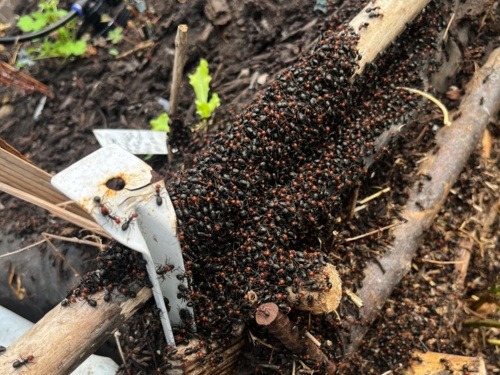
So far, vinegar, orange oil, and Dawn soap in water are discouraging them. I spray my shoes with it before I step very far inside.
Seriously, the numbers are unreal. They have definitely hampered my ability to get anything done in there. They have taken over beds and pots. In desperation, I took several plants out prematurely. Update to follow.
Snakes!
Yay! Careful! Don’t step on them! They eat ants… how do I encourage them to enter a citrus-smelling jungle room? Perhaps I sprayed too soon?
…and Frogs.
The evening chorus continues. I cleaned out the “pond” last month. I have 3 other shallow water sources that need attention.
Mammals
Deer
Four of them in our yard yesterday, guzzling birdseed from the feeders like a bottomless on-tap bistro bar – which it kind of is. There is a smorgasbord all around them to choose from, but they go for the grain. Hmm. This might have to end. Most of the birds have transitioned to insects and caterpillars, although the finches still appreciate the seed buffet….
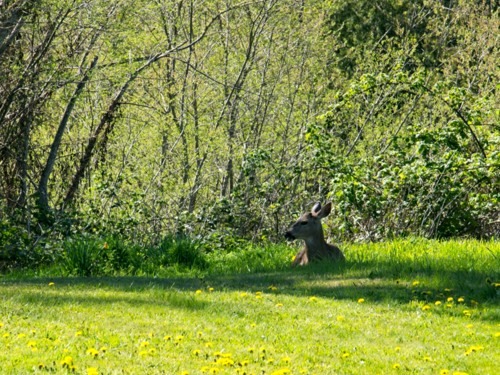
Exotic Invaders
Peacocks:
True. Peacocks. Who knew. Just over the hill and moving closer. They have used our property for nesting and rearing young for the past three years. Will they return this year? The male scout has arrived. He roosted overnight in a tall tree outside our bedroom window and called to his friends at 4:22 a.m., which, if I didn’t know better, sounded like a very loud strangling cat.
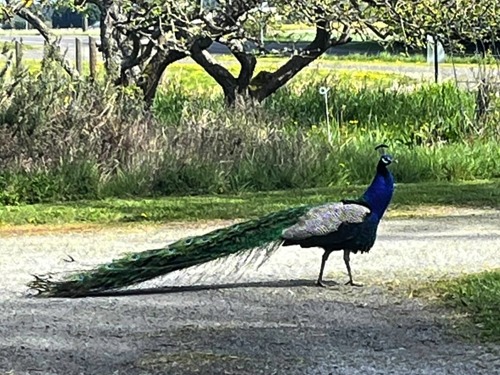
April Plant Highlights
April is a coming out party. There are subtle flowers – and then there are the big and bold.
In the subtle category:
Lots of berry blossoms! New pink flowers on the salmon berries; tiny blossoms on currants – loads of them! And also the native huckleberries. The Goumi bush is large and absolutely loaded with blossoms this year. They are small, kind of a yellowish-tannish-whitish, and they attract the bees. An early honey berry bush has similar blossoms, but just a few. Aronias (Aronia melanocarpa) are another that stand tall but the blossoms are not as showy. Elders (Sambucus racemosa – the red kind) and Serviceberries (Amelanchier alnifolia) are also blooming.
Almost overlooked, climbing up the barn wall (2 tall stories!) and up and over the bay laurel shrub, eye candy for any birds flying overhead: Clematis! How does such an exotic flower even grow in this area? Spectacular!
A beautiful combination: blue forget-me-nots with pinkish-purple-blue lungwort / Pulmonaria. Several purples: rosemary, hyacinths, bluebells, and periwinkle. Delicate beauties, all. However, I do not recommend periwinkle (Vinca major), a vining groundcover that takes its job a little too seriously.

And in the Big and Bold category:
The yellow theme continues bold and bright: forsythia, daffodils, dandelions, mustards, Oregon grapes (almost gone). Bring it on!
The Most-Abundant-Flower-of-the-Month award goes to [suspense]… the dandelion. I admit, dandelions are my favorite flower. They get a bad rap for being non-native, and here in the northwest, are both revered and scorned. I am in the Revere camp. Their mere presence is an act of rebellion; they can grow in sidewalk cracks. All parts of them are medicinal and useful. I have used them to make roasted root coffee, flower jelly and wine, and of course, wishes.
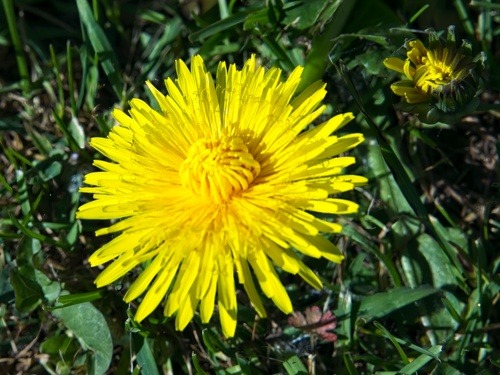
However, I recently read that dandelions, even though they are some of the first flowers to bloom, are not a great source of pollen or protein for early insects. Better than nothing, but some better sources might be willows, currants, Saskatoon/service berries, maples, elderberries, American plums, and choke cherries. This article might give you permission to mow them down without remorse. My advice, though, is to let them bloom and plant all those other things, too. One can never have too many plants nor too little lawn.
But the true star of the month: Star Magnolia. The blossoms glow in the dark under a bright moon and at times appear outright magical.
The orchard extravaganza: The beauty torch was later passed from the magnolias (now beginning to turn brown with age, but still quite beautiful) to the orchard, where 5 apple trees burst into bloom along with an elder, two plums, and an old variety of cherry. The cherry, in particular, is covered with dense bundles of blush-of-pink blossoms on the tips of long branches that kind of bob to a gentle swing tune with the breezes – and when the light hits them just right, I just have to stop and catch my breath.
Covered with blossoms — Sweet Cicely: Myrrhis odorata, another early nectar source with licorice-smelling roots, leaves, and seeds. It tends to be a bit large and invasive, but I grow it because it is a favorite of the predator wasps, which are nice to have around if tent caterpillars show up. This and the Manchurian Viburnum (pictured below) look like large flowers composed of many tiny flowers, which is what they are. Beautiful.
Also blooming: Rhododendrons, our state flower! Must go hike up in the mountains to see them growing in the wild. Also, Star of Bethlehem and sweet woodruff groundcovers, alpine strawberries, primroses, and many of the plants from March.
Invasives from the Plant World…
Meanwhile, on the ground, a battle is brewing: Bindweed popping up everywhere. And I do mean everywhere. Uh oh. I pause to question my attitudes about what it means to be “invasive” and whether that immediately requires a judgment of “bad,” “evil,” “alien.” Perhaps we can view them as survivors, adaptors, bioaccumulators, transitional links, indicators….
Um. Nope. Nice try. These guys will never go away willingly, and I vow to curb their determination to clamber over everything in their quest to reach the sun before anyone else. It will require more vigilance than I have devoted in the past. The challenge begins.
Adventures:
A quick trip to the Southwest to pay tribute to a fun-loving eclectic member of our family who made us all smile. We distributed his ashes in the Superstition Mountains. The cacti were in bloom. Ahhhh! Perhaps the “gold” in them thar hills does not refer to coin.
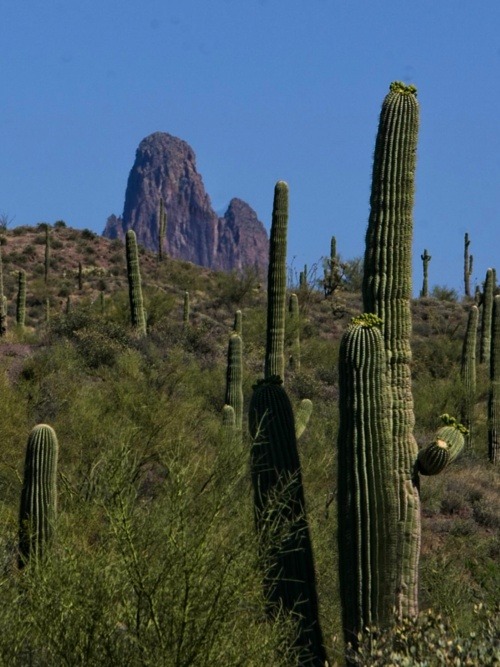

Back home, a walk of quiet reflection along the Dosewallips River. The trilliums and bleeding hearts stood out along an easy trail beside the rushing water.
Minus tides found us out digging in the sand for clams and other interesting creatures of the sea world.

Three very different environments, each very beautiful in their own ways. A strong example of how amazing the diversity is of life on this planet!
